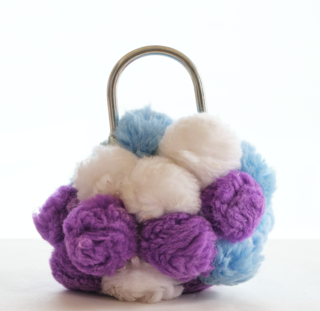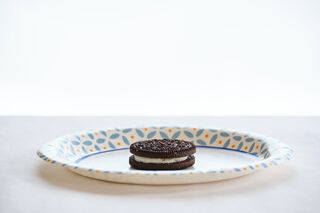Intelligence
To Copy or Not to Copy
What makes a child copy a model's questionable actions?
Posted June 23, 2021 Reviewed by Chloe Williams
Key points
- When a model makes a questionable decision, whether or not children go along with it depends on many factors related to the model and the child.
- Children who have a tendency to want to please others are more likely to imitate a model's questionable action, one study shows.
- Several aspects of the model also affect imitation rates, including the model's presence, relationship to the child, and similarity to the child.
In my previous post, I discussed a series of studies I have conducted exploring children’s willingness (or unwillingness) to imitate a model when she intentionally selects a rather ineffective tool (e.g., one composed of pom-poms) to perform a task (e.g., to crush a cookie) over a more effective option (e.g., one with a sturdy handle and solid bottom). That post discussed how the circumstances surrounding the task and its presentation impact children’s decisions. In this post, I would like to further explore the conditions that affect children’s imitation rates in this paradigm, particularly with regard to the characteristics of the model and of the children who are participating.

Factors Related to the Child and Model Affect Imitation Rates
One aspect of the children that related to their likelihood of imitating was their personality. Children ages 3 to 7 who scored higher on a measure of social desirability designed for young children, were more likely to copy the model’s ineffective choice. That is, children who expressed more of a desire to please others – e.g., by claiming that they always say "please" and "thank you," and that they never fight with their parents – were also more likely to imitate.
Much of our subsequent research has explored how various factors related to the model would affect imitation rates. For example, whether or not the model who demonstrated the task on the video was in the room with the children at the time of their selection plays a role. In one of our studies, half of our participants were asked to select which tool they needed to crush the cookie by the model herself, and half were asked by unfamiliar adults when the model was not around. Results indicated that children were more likely to choose the same ineffective tool that the model had used when she was in the room with them – this was especially true of older children (e.g., ages 8 to 11).
Another characteristic of the model that we explored was the model’s relationship to the child. In unpublished work, we exposed half of our participants to an unfamiliar adult model and half to their parent. Somewhat surprisingly, we found that children who were exposed to an unfamiliar adult selecting the ineffective tool were more likely to copy than those who watched their parents do it. We suspect this may be because children view their parents more like playmates and unfamiliar adults more like teachers. Similarly, in another unpublished study, we found that children — especially boys — were not particularly likely to copy peer models who chose an ineffective tool for a task. This may be because children view peers more as playmates and less as trustworthy, reliable informants.
However, we did find one exception to this in another study when group membership was highlighted. We exposed children to a model that matched them in either gender, age, or both. After watching the model, we drew attention to the child-model connection by asking the children to indicate how much they thought the model was “like them.” Results showed that children were more likely to copy the model’s use of an inefficient tool if they matched the model on at least one dimension, particularly if they matched in age.
Investigating the Effect of Others' Reactions
A study that is currently in progress assesses not only how the children view the model, but also how they view the way that others react in response to the model. In particular, we are asking whether or not another person’s conformity to (or disregard for) a model’s conventional actions affects children’s subsequent judgments of that person’s rationality/trustworthiness. In this study, children watch a model use either instrumental or conventional language before selecting the ineffective tool. Then, they watch two new informants choose a tool with which to crush the cookie – one copies the model, and one does not. Finally, children are presented with a series of new objects and asked who they should turn to for information about the new objects – the girl who copied the model or the girl who did not. Our prediction is that children who are presented with the model using conventional language initially will be more likely to turn to and rely on the informant who imitated her.

In sum, although there are only two choices in the cookie-crushing paradigm – there are countless more factors that determine which of those two choices children make. The setting and manner of presentation play a role (see also my previous post). The cultural background, personality, and potentially the age of the children matter. Finally, several aspects of the model make a difference. I embarked on this research thinking that the answer would be simple – either children would or would not copy a model’s silly decision to crush a cookie with pom-poms.
What I have realized is that imitation is immensely more complex than I had imagined. I will likely keep the one company that makes the nut-free version of the sandwich cookie in business for many years to come as I continue to piece together the multitude of influences on children’s decision-making in this paradigm.


